Hidizs AP80 Pro Review – Value Proposition
Pros — Build quality and design
– Hiby OS is rather feature-rich
– Balanced output has good amount of power and no noticeable hiss
– Good staging and mostly neutral presentation
– Generally good value
Cons — Hidizs AP80 Pro has average battery life
– Finicky touch response
– MSEB implementation isn’t the best
– Somewhat dry tonality
– Stock silicone case is horrible
In this Article
INTRODUCTION
Hidizs have been around the block for a while now, mostly focusing on portable DAC/Amps, dongles, and the occasional DAP/IEM. The AP80 Pro is their update to the original AP80, and it brings in a dual-DAC architecture and a balanced output. The rest of the device is rather intriguing too with DAC support, MQA decoding capabilities, and sporting Hiby OS which has a lot of bells and whistles to tweak the sound.
Without further ado, let’s see if the Hidizs AP80 Pro can justify its $170 price tag.
Note: the ratings given will be subjective to the price tier. Hidizs was kind enough to send me the AP80 Pro for evaluation.
Firmware version: 1.5
IEMs/Headphones used: Final FI-BA-SS/E5000/Sonorous III, Dunu Zen, Campfire Audio Holocene, Meze 12 Classics V2, Etymotic ER2XR
Price, while reviewed: $170. Can be bought from Hidizs website (please note: this is an affiliate link, proceedings will go to a charity of choice)
PHYSICAL THINGS AND USABILITY
PACKAGING AND ACCESSORIES
The packaging is fairly minimal but you get all that you need to get started: a type-C charging cable, an OTG cable, and a horrible looking silicone case. The case does its job but makes the entire device look ugly which is a shame given the great design. Nothing is left out, but nothing stands out either in terms of supplied accessories.
3.5/5
BUILD QUALITY AND HANDLING
The Hidizs AP80 Pro was quite a bit smaller than I assumed it to be. It fits right in the palm of your hand though the sharp edges can feel uncomfortable. The design is a popular one: aluminium frame sandwiched by two sheets of glass. The screen protectors are pre-applied and that’s a good thing.
The scroll wheel is a bit of a mixed bag. It’s rather sturdy (doesn’t wobble as much as many others) and has defined clicks. However, the clicks feel mushy and the movement has a scratchiness to it. I am nitpicking but hey – I am a bit too particular about rotating knobs.
The playback buttons have good feedback, however, and I love that Hidizs put all the ports at the bottom of the device (unlike many flagship DAPs out there). On the left side you’ll find the microSD card slot (up to 512GB+, absolutely necessary since the Hidizs AP80 Pro lacks in-built storage). The top is bereft of anything.
Overall, the Hidizs AP80 Pro has a good build and the design is rather unique indeed. I do wish the scroll wheel was better (despite using ALPS potentiometer).
4.5/5
DISPLAY AND USER INTERFACE (UI)
The display is a 2.45″ Samsung IPS panel (480*360) with capacitive touch layer underneath. Since the display isn’t laminated, it shows a loss of contrast when viewing from an angle (and not the best under direct sunlight). Display brightness is quite good though, and the pixel density is good enough to hide pixellation from working distance.
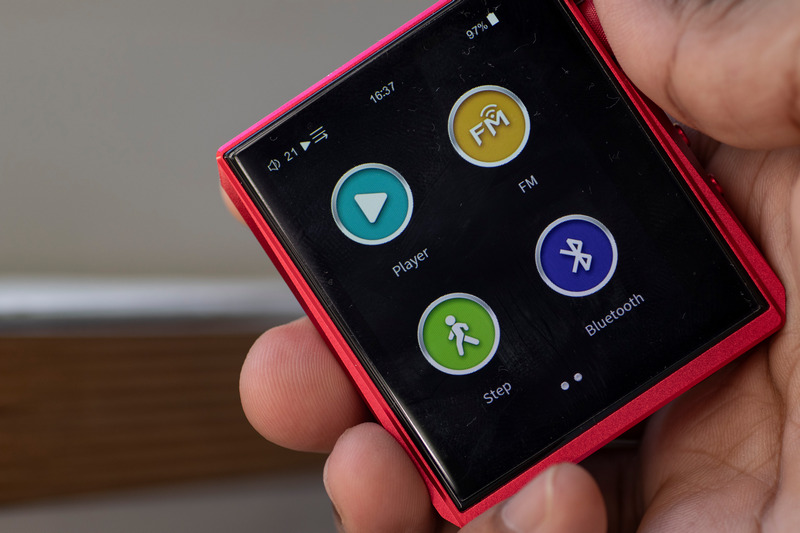
Hiby OS is what Hidizs is using here, and it’s a pretty solid DAP OS. It takes ~10 seconds to boot, and then you go straight into a “launcher” of sorts. Here, you can access the actual music player, or use the FM Radio/Pedometer/BT DAC/eBook reader (why?)/System Settings/About menus. It’s a pretty straightforward launcher though I wish there was a faster way to get back to the launcher screen from within the music player app (right now you have to exit the app and then only you can get to the launcher screen).
I think the most impressive/noteworthy part of the Hiby OS is its MSEB feature. It’s a sort of DSP/Parmetric EQ combo that allows you to fine tune aspects of the output such as warmth/brightness/bass rumble/male vocal thickness and so on. It’s fun to play with if you’re into tweaking the sound of your DAP, and can help in fixing some tonality issues in many IEMs.
However, the implementation here on the AP80 Pro isn’t as good as the one found on Hiby R6 2020, or even the Hiby R3 Pro Saber. Both of those had a more convincing tweak to the sound whereas on the AP80 Pro it feels like you’re just using a multi-band EQ and never really have the same control on shaping the sound.
Sliding up from the bottom of the screen brings a menu that’s not unlike iOS’ Control Center. Here you can adjust the volume/brightness, control playback, and switch Bluetooth on/off, select gain level (low/high), switch between DAC or Storage mode when connected to USB, and finally switch between line-out/headphone output mode. Use the last one with caution though since it just maxes out the volume to reach the nominal 2Vrms output level (it’s not a true line out where there is only voltage gain).
Speaking about the performance of the DAP, it’s pretty good and much better than a certain Fiio M6. However, you won’t get even low-end smartphone level of smoothness. There will be missed swipes and taps and the entire UI runs at 30fps or lower so things won’t be very smooth. It’s absolutely usable though and a far cry from non-touch DAPs like Questyle QP1R in terms of usability.
4/5
BATTERY LIFE
Battery life was about average especially from the balanced out. You get between 8-10 hours of playback based on the device/volume level used mostly due to the 800mAh battery used. This is far from the battery life you get from some competing DAPs, namely Sony NW-A55 (~35 hours) or the Cowon Plenue D (~90 hours, it’s not a typo). In AP80 Pro’s defense – those don’t have quite as much output power or balanced circuitry as the Hidizs DAP. However, we are considering raw battery life only, so it’s an area where Hidizs can do better. The battery charging speed is fairly good though and should top the DAP up within an hour and half.
3/5
PAIRING NOTES
The Hidizs AP80 Pro is not a powerhouse and won’t run the Sennheiser HD600 and the likes well. There’s a noticeable lack of bass extension and slam with the HD650, for example. Final Sonorous III fared much better though the bass wasn’t as well-controlled on the AP80 Pro as it is on desktop sources.
As for IEMs, even with the sensitive Final FI-BA-SS I couldn’t notice any hiss and the sound was fairly dynamic. Dunu Zen had a good pairing though the upper-mid glare was more noticeable here. Best pairing was with the Meze 12 Classics V2 and the Campfire Holocene.
TECH SPECS
Hidizs decided to use the tried and tested Sabre ES9218P DAC chips in dual-DAC configuration, and are using the built-in amp circuit of these DACs. This isn’t a bad thing really since it allows you to get reasonably good amp performance in a small package. I couldn’t find the output impedance figures anywhere though, bummer. Full specs are here.

TONALITY, TECHNICALITIES, AMP PERFORMANCE
The Hidizs AP80 Pro has a slightly colored tonal profile, with a bit more focus in the bass region and some emphasis in the upper-midrange (a common tonal trait of these ESS chips). There is some dryness in the midrange that makes male vocals sound a bit distant and coarse. This can be somewhat mitigated by the MSEB tweaks but I prefer not to use DSP/EQ too much myself. The bass and treble could be a bit more resolving given the competition.
The best part about the AP80 Pro’s sound signature has to be its soundstage which is quite wide and never feels closed-in even with IEMs that can feel narrow on some DAPs. Imaging isn’t as accurate as higher-tier DAPs but for the price I don’t expect much better. Separation is also very good provided you have a resolving enough IEM.
Speaking about amp performance, the balanced output was powerful enough to drive the Final E5000 quite loudly, but the E5000 didn’t have quite the bass control that you can get on something like Questyle QP1R/Apogee Groove. Also the balanced output won’t run pesky planars, though some low-end planars like Hifiman HE-400se sounded alright.
Still, for these headphones I’d recommend a desk amp. The balanced output also has better channel separation. I’d personally recommend using the balanced output on the AP80 Pro since it’s noticeably better than the single-ended output.
All in all, the Hidizs AP80 Pro is a good performer for the price bracket. It has good staging and separation capabilities but doesn’t stand out in the other performance criterion. The amp section is fairly powerful from the balanced out but won’t run high impedance headphones that well so it’s mostly for moderately sensitive IEMs and headphones.
4/5
SELECT COMPARISONS
vs Hiby R3 Pro Saber ($210): At $40 extra, the Hiby R3 Pro Saber gives you WiFI capabilities (supports Tidal playback) and a more powerful balanced out. It also noticeably increases the battery life. You do lose out on the superior industrial design of the AP80 Pro and the Hidizs DAP has a better display.
That’s all on paper though. In terms of absolute sound quality, I can’t really notice much difference between them. The Hiby R3 Pro Saber has a bit more sterile tone (not a good thing in my book) but counterbalances that with better MSEB implementation (also the OS is more feature-rich on the Hiby R3 Pro Saber). The extra output power is handy if you want to push some higher impedance headphones but with most IEMs this extra power didn’t really matter.
In terms of specs, the $40 extra for the R3 Pro Saber is well worth it. However, if you’re after absolute sound quality and not the extra bit of power and can live without Tidal playback, the Hidizs AP80 Pro will give similar performance at a lower cost.
vs Sony NW-A55 ($200): I’ll say it outright – the Sony NW-A55 is my most favorite DAP around the $200 price bracket. It’s got a great industrial design, the display is fabulous, the UI is snappy, and the sound signature is gorgeous (as Gordon Ramsey would say). The best part about them are the modded firmware by a certain MrWalkman and they bring different tuning to the stock signature.
The Sony DAP is hard to find (it’s biggest con), lacks balanced output, and doesn’t have a lot of output power. Oh, it also uses the forsaken WMPort so you gotta carry that cable around. Battery life is exceptional though at ~35-40 hours of playback. Standby times are also excellent as I rarely turn it off and still have enough juice left for on the go use.
As for sound, the Sony NW-A55 reigns supreme in midrange rendition. The mids on the Sony DAP is unlike anything you’ll hear in this range and has a analogue-ish feel to it. The bass and treble is about similar on both DAPs, though I felt the bass to have slightly better texture on the A55. Staging and separation is where the AP80 Pro pulled ahead. Also, Sony NW-A55 doesn’t have anything like MSEB (though it has Sony’s own proprietary DSP based tricks).
Between these two, I’ll personally pick the Sony NW-A55. If you need a balanced out and more bells and whistles – the Hidizs AP80 Pro may be a better fit for your use-case.
vs Fiio M6 ($150): The Fiio M6 is horrible in almost every aspect. The Hidizs AP80 Pro is far superior. Please avoid the Fiio and save yourself hours of frustration. Thank you.
CONCLUDING REMARKS
Looking at the rest of the <$200 DAP market, the Hidizs AP80 Pro seems like a good value proposition. I don’t see a major weakness here. The issues I have are not really deal-breakers and competing DAPs have similar/worse problems. The display is good, the UI has quite a lot of features, and the design is a standout.
The middling battery life and the finicky touch response are the only sore points. Among its competitors, I do have a soft spot for the Sony NW-A55, but if you want better staging and separation over a more refined midrange tonality – the Hidizs AP80 Pro will serve you better than most other DAPs in this range.
MY VERDICT
4/5
DISCLAIMER
Get it from Hidizs Store. Check out their YouTube channel.
You can get 5% off with the following code: KMMBD5 (AP80/AP80 pro/DH80s/MS2/MS4/S9 pro/MS1/H2)
You can get 3% off with the following code: KMMBD3 (S8/MS1 rainbow/Seeds/H1/BT01/S3pro)
I have to mention the above offers due to contractual obligation. Also, the links above are affiliated, proceedings will go to a charity of choice.
Our generic standard disclaimer.
PHOTOGRAPHY
You find an INDEX of our most relevant technical articles HERE.

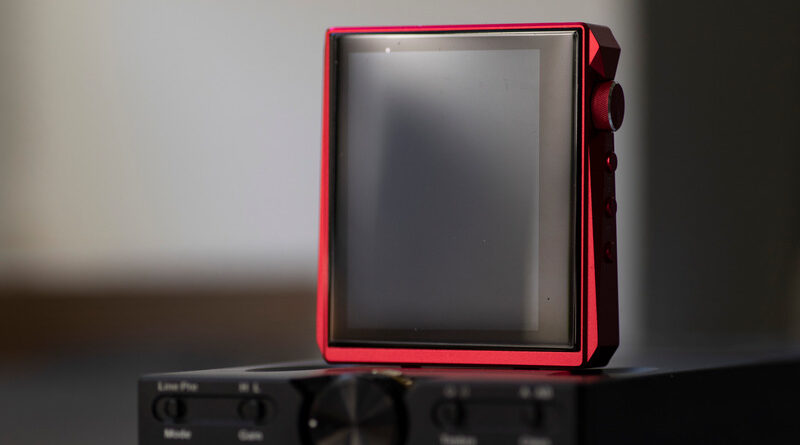



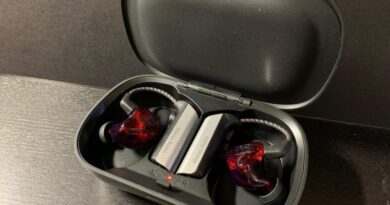
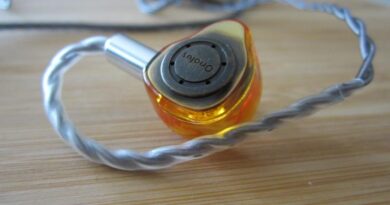
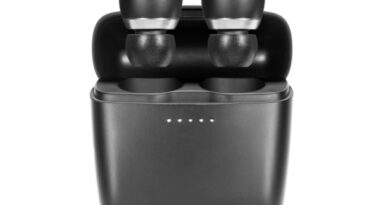
Pingback: Hidizs AP80 Pro Review - GearOpen.com
I have a AP 200 and now the whole back side of the player came off….. What can I do?
I think it’s best to contact Hidizs, but if it’s the glass on the back-panel then you can get some “bonding glue” from hardware stores (metal-glass bonding glues). For your purpose you can probably just get by with relatively low-strength ones.
About MSEB:
From the article: “However, the implementation [of MSEB] here on the AP80 Pro isn’t as good as the one found on Hiby R6 2020, or even the Hiby R3 Pro Saber. Both of those had a more convincing tweak to the sound whereas on the AP80 Pro it feels like you’re just using a multi-band EQ and never really have the same control on shaping the sound.”
I have the AP80 Pro, you may not have noticed, but in the MSEB settings (the little gear icon found after clicking on MSEB, not in the Play Settings), you can adjust what “level” of MSEB you want to use, either ‘Fine Tuning’ (lowest), ‘Middling’ (middle), or ‘Excessive’ (highest). It is automatically set on the lowest ‘Fine tuning’ setting, but if you set it to ‘Middling’ or ‘Excessive’ it changes/shapes the sound much more noticeably. It usually cuts the volume a little with MSEB turned on.
(However, I have not used MSEB on any other player, so I do not know how it compares to other players with it.)
I am not one to use an Equalizer on any player, ever, except maybe presets very occasionally, so I did not use MSEB at all much at first, but now find it quite enjoyable to use on occasional recordings or headphones that need a little tweaking. It is much easier to use than a naked parametric equalizer for the novice (like myself).
The AP80 Pro is a great entry level unit. It’s the nicest DAP I’ve ever used, had it about a year or so, and will probably upgrade to a slightly better model in a couple years. Before this I stuck to using sub $50 DAPs or smartphone and some nice budgety amps. My only issues are the smallish screen (though I love the size, it’s a tradeoff) and a bigger battery would be nice, though it’s been quite adequate. Also I don’t like how HibyOS software doesn’t let you browse by ‘Album Artist’ or just by even a few more tags in the files, so I usually just browse files by Folders. (I got spoiled using Sansa Clip players with RoxkBox for several years, so many options in that OS!) But I am hooked on the Hidizs’ stellar sound, the solid build quality and the player has introduced me to the world of balanced headphones.
Yes, the levels can be selected just as the higher-tier Hiby OS models, but the DSP effects are a bit more “realistic” on those higher models. This is likely due to better CPU on those models, as the AP80 Pro (and the likes) are budget-oriented and has rather basic CPUs inside.
AP80 Pro is very good, and really ticks a lot of boxes. If you plan on upgrading, take a look at the Tempotec V6. Has the Hiby OS, and also sounds noticeably better across the board with a larger display and Android. Battery life is pretty good as well.
Pingback: Where is Hidizs based? - DroidSome
Shenzhen.